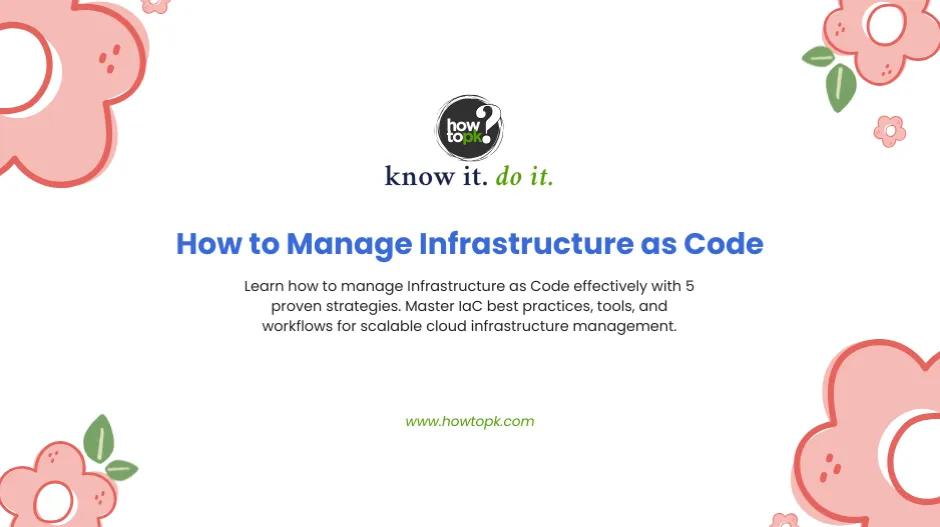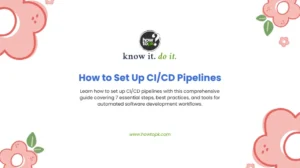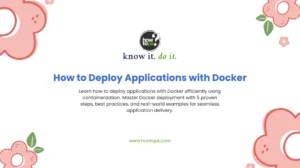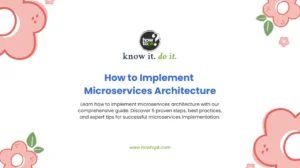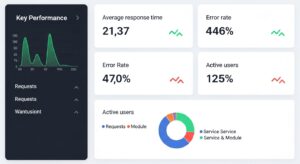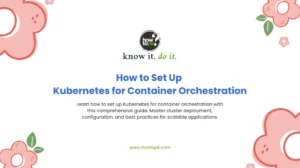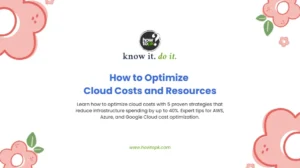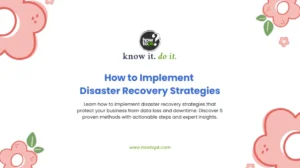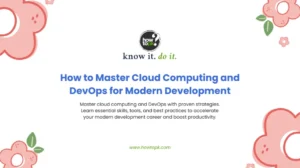Infrastructure as Code has revolutionized how organizations deploy and manage their cloud resources, but many teams struggle with implementation challenges that can lead to costly mistakes and operational headaches. Whether you’re just starting your IaC journey or looking to optimize existing processes, understanding the fundamental principles of effective infrastructure management is crucial for success.
The shift toward treating infrastructure like software code brings tremendous benefits: version control, reproducibility, and automated deployments. However, it also introduces new complexities that require careful consideration and strategic planning.
Understanding Infrastructure as Code Fundamentals
Before diving into management strategies, let’s establish what makes Infrastructure as Code so powerful. IaC allows you to define your entire infrastructure stack using declarative or imperative code, stored in version control systems just like application code.
This approach transforms infrastructure from manual, error-prone processes into automated, repeatable workflows. Teams can now provision entire environments with a single command, ensuring consistency across development, staging, and production systems.
The core benefits include:
- Consistency: Every deployment follows the same defined patterns
- Speed: Automated provisioning reduces deployment time from hours to minutes
- Reliability: Version-controlled infrastructure reduces configuration drift
- Cost Control: Automated resource management prevents forgotten resources
Strategy 1: Establish Strong Infrastructure as Code Governance
Effective governance forms the foundation of successful IaC implementation. Without proper oversight, teams often create sprawling, unmaintainable infrastructure codebases that become more problematic than the manual processes they replaced.
Define Clear Ownership Models
Establish who owns what within your Infrastructure as Code ecosystem. Create a RACI matrix (Responsible, Accountable, Consulted, Informed) that clearly defines roles for:
- Infrastructure architects who design overall patterns
- Platform engineers who implement core modules
- Application teams who consume infrastructure services
- Security teams who enforce compliance requirements
Implement Code Review Processes
Treat infrastructure changes with the same rigor as application code changes. Every infrastructure modification should go through peer review, automated testing, and approval workflows before reaching production environments.
Consider implementing branch protection rules that require multiple approvers for critical infrastructure components like networking, security groups, and IAM policies.
Strategy 2: Master Infrastructure as Code Tooling and Workflows
Selecting the right tools and establishing efficient workflows directly impacts your team’s productivity and infrastructure reliability. The modern IaC landscape offers numerous options, each with distinct advantages.
Choose Your IaC Tools Strategically
Tool Category | Popular Options | Best Use Cases |
Declarative IaC | Terraform, AWS CloudFormation, Azure ARM | Multi-cloud deployments, complex state management |
Configuration Management | Ansible, Chef, Puppet | Server configuration, application deployment |
Cloud-Native | AWS CDK, Pulumi | Developer-friendly, programmatic infrastructure |
GitOps | ArgoCD, Flux | Kubernetes deployments, continuous delivery |
Terraform remains the most widely adopted tool due to its cloud-agnostic approach and robust state management capabilities. However, cloud-native solutions like AWS CDK offer superior developer experience for single-cloud environments.
Establish Standardized Module Libraries
Create reusable infrastructure modules that encapsulate best practices and organizational standards. This modular approach reduces duplication, ensures consistency, and accelerates development cycles.
Your module library should include:
- Networking components (VPCs, subnets, security groups)
- Compute resources (EC2 instances, auto-scaling groups)
- Database configurations (RDS, DynamoDB)
- Monitoring and logging setups
- Security baseline configurations
Strategy 3: Implement Robust State Management for Infrastructure as Code
State management represents one of the most critical aspects of Infrastructure as Code operations. Poor state handling leads to resource conflicts, data loss, and deployment failures that can impact production systems.
Centralize State Storage
Never store Terraform state files locally or in version control. Instead, use remote state backends that provide:
- Locking mechanisms to prevent concurrent modifications
- Encryption for sensitive configuration data
- Versioning to enable state rollbacks
- Access controls to limit who can modify infrastructure
Popular remote state solutions include:
- Terraform Cloud for managed state with built-in CI/CD
- AWS S3 with DynamoDB locking for cost-effective storage
- HashiCorp Consul for on-premises deployments
- Azure Storage Accounts for Azure-centric environments
Plan State Architecture Carefully
Design your state architecture to match your organizational structure and blast radius requirements. Consider separating state files by:
- Environment (development, staging, production)
- Service boundaries (networking, applications, databases)
- Team ownership (platform, security, application teams)
- Lifecycle (long-lived vs. ephemeral resources)
This separation ensures that changes to one component don’t inadvertently affect unrelated infrastructure.
Strategy 4: Automate Testing and Validation
Infrastructure as Code testing ensures your infrastructure changes work correctly before they reach production environments. Comprehensive testing strategies catch configuration errors, security vulnerabilities, and compliance violations early in the development cycle.
Implement Multi-Layer Testing
Structure your testing approach across multiple layers:
- Static Analysis: Use tools like Checkov or TFSec to scan infrastructure code for security misconfigurations and policy violations before deployment.
- Unit Testing: Test individual modules and components in isolation. Tools like Terratest enable automated testing of Terraform modules with real infrastructure.
- Integration Testing: Validate that infrastructure components work together correctly by deploying complete environments and running functional tests.
- Compliance Testing: Ensure deployed infrastructure meets organizational security and compliance requirements using tools like InSpec or Open Policy Agent.
Automate Testing in CI/CD Pipelines
Integrate infrastructure testing into your continuous integration workflows. Every infrastructure change should trigger automated tests that validate:
- Syntax and formatting correctness
- Security policy compliance
- Cost impact analysis
- Performance and scalability requirements
This automation prevents problematic changes from reaching production while providing fast feedback to development teams.
Strategy 5: Monitor and Optimize Infrastructure as Code Operations
Effective monitoring and optimization ensure your Infrastructure as Code implementations remain efficient, cost-effective, and aligned with business objectives over time.
Implement Comprehensive Monitoring
Monitor both your infrastructure resources and your IaC processes:
Infrastructure Monitoring: Track resource utilization, performance metrics, and cost trends across all managed infrastructure. Use tools like AWS CloudWatch, DataDog, or Prometheus to maintain visibility into system health.
Process Monitoring: Monitor your IaC workflows, deployment success rates, and configuration drift. Track metrics like:
- Deployment frequency and success rates
- Mean time to recovery from infrastructure issues
- Configuration drift detection and remediation
- Infrastructure cost trends and optimization opportunities
Establish Cost Optimization Practices
Infrastructure as Code makes cost optimization more systematic and repeatable. Implement practices that automatically optimize resource usage:
- Use auto-scaling groups and spot instances where appropriate
- Implement resource tagging strategies for cost allocation
- Set up automated resource cleanup for temporary environments
- Use infrastructure cost estimation tools in CI/CD pipelines
Regular cost reviews should examine infrastructure spending patterns and identify optimization opportunities across your entire IaC-managed infrastructure.
Advanced Infrastructure as Code Management Techniques
As your IaC maturity grows, consider implementing advanced techniques that further improve reliability and efficiency.
- GitOps Integration: Integrate Infrastructure as Code with GitOps principles to create fully automated, audit-friendly deployment workflows. This approach treats Git repositories as the single source of truth for both application and infrastructure configurations.
- Progressive Delivery: Implement progressive delivery techniques for infrastructure changes, including blue-green deployments and canary releases. These approaches reduce the risk of infrastructure changes while enabling rapid rollback capabilities.
- Policy as Code: Extend your IaC implementation with policy as code frameworks that automatically enforce security, compliance, and operational requirements across all infrastructure deployments.
Common Pitfalls and How to Avoid Them
Learning from common Infrastructure as Code mistakes helps teams avoid expensive setbacks:
- State File Corruption: Always backup state files and test recovery procedures regularly. Implement state file versioning to enable rollback capabilities.
- Overly Complex Modules: Keep infrastructure modules focused and composable. Avoid creating monolithic modules that become difficult to maintain and test.
- Insufficient Documentation: Document module interfaces, dependencies, and usage examples. Poor documentation slows adoption and increases support burden.
- Ignoring Drift: Implement automated drift detection to identify when actual infrastructure diverges from defined configurations. Regular drift remediation prevents configuration inconsistencies.
Measuring Infrastructure as Code Success
Establish metrics that demonstrate the value and effectiveness of your IaC implementation:
- Deployment frequency: How often you can safely deploy infrastructure changes
- Lead time: Time from infrastructure change request to production deployment
- Recovery time: How quickly you can recover from infrastructure incidents
- Configuration consistency: Percentage of resources that match defined configurations
These metrics help justify continued investment in Infrastructure as Code practices and identify areas for improvement.
Conclusion: Building Sustainable Infrastructure as Code Practices
Successfully managing Infrastructure as Code requires a holistic approach that combines technical excellence with organizational discipline. The five strategies outlined—governance, tooling, state management, testing, and monitoring—provide a comprehensive framework for building reliable, scalable infrastructure automation.
The key to long-term success lies in treating infrastructure code with the same professionalism and rigor applied to application development. This means embracing testing, code reviews, documentation, and continuous improvement as core practices rather than optional activities.
As cloud environments become increasingly complex, organizations that master Infrastructure as Code management will gain significant competitive advantages through faster deployment cycles, improved reliability, and reduced operational overhead. Start with solid foundations, iterate based on lessons learned, and continuously evolve your practices to match your organization’s growing needs.
The investment in proper IaC management pays dividends through reduced manual effort, improved system reliability, and enhanced team productivity. Begin implementing these strategies systematically, and your infrastructure operations will become a competitive advantage rather than a operational burden.

